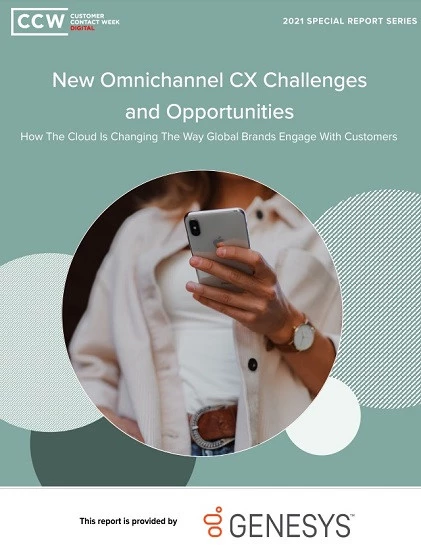When Government meets Customer Management: A Q&A with Mary Paige Forrester
Add bookmarkYou spent some time at TSA as a call center leader. Can you tell us about your experience there?
I served a 2 year federal appointment as the Program Manager for TSA’s Contact center. In the PM role, I had oversight of a federal contact center acquisition program and earned certification as a Level 1 Program Manager. This was my first experience in the federal environment, although I did work on 2 public sector contact centers for 7 years for the State of North Carolina.
What shifts or trends do you see happening within the government customer service space in the past couple years?
A lot of contact centers right now are focusing on social media: Twitter, Facebook, Web Chats, Blackberry and RSS feeds and alerts, etc. Although I agree this is an important area for those centers whose customers are younger (Gen X and Y), I do not see it as an essential element right now for contact centers in general. Remember, the largest US demographic group is baby boomers. These people are retired or nearing retirement age, and are less inclined to use social media.
That being said, I do understand the importance of technology in the contact center environment. How much technology a company implements should be determined by the primary communication methods preferred by their customer base. IVR and other automated and integrated systems are still very important. Even if only a small percentage of your facility’s contact can be handled through self-service in an IVR or on a well-designed web site, it is extremely cost effective in the long run.
[eventpdf]
What are your thoughts on how FEMA handled the Hurricane Katrina disaster? And how did this event change the way government customer service industries planned how to respond to wide-scale disasters? Could you talk a little bit about Alternative Response Technology and how that's implemented during these times of crisis?
Could FEMA have responded faster and better? Sure, they could. They were not fully prepared for nor could they have accurately anticipated the amount/degree of havoc from a storm before it hits and the impact is determined. I am more disappointed with FEMA’s longer-term response than the immediate one.
As for Alternative Response Technology (ART), I think it is a great tool. The more ideas generated from different sources, the more likely a viable solution will be found. It’s like "brainstorming" in a meeting, except that it is done online, making it open to more sources and people who might have something of value to contribute. Given the privacy, security and sensitive nature of work in some government contact centers, I do not see ART as a tool being used in the federal contact center workplace.
However, a variation of ART is a technique I have used for years. It uses internal resources instead of external ones, but the goal is the same. It’s called "Employee Forum", and a lot off successful call centers have learned the value in having them.
Following along the lines of the previous question, what’s the protocol for government call centers in times of wide-scale crisis, for example the recent BP spill?
Each facility is so unique in the customer base, the size of the facility (number of FTEs and contacts), the type of contact center (in-house, outsourced, contracted, inbound, outbound, blended) the services provided (customer service, technical support, information only), the hours of operation (regular business hours or 24x7), and other variables, that no one solution can be applied to all contact centers.
You will be leading a workshop at this December’s Government Contact Center Event in D.C. Can you give our readers a sneak preview of what you will be talking about?
I will be leading an interactive workshop on "A Practical and Interactive Workshop Focusing on Finding, Building and Retaining a Talented Staff" and incorporating top-notch materials from two incredible companies that specialize in training materials for contact centers.
The workshop will include how to reveal each manager’s personal leadership style, and help identify ways to make your personality work for you in motivating and leading staff, as well as identify gaps where your personality style may negatively impact your team(s).
What are your thoughts on what happens when call centers, for example, are placed in a unionized environment such as the government? Are there specific drawbacks or perks to this combination?
It has been my experience that unionization tends to be bad for business and for consistently good customer service. It makes management’s role (typically non-union/exempt employees with oversight of union staff) extremely difficult. Imagine having an employee who is blatantly insubordinate, does not meet required metrics, is consistently absent, and is undermining the leadership by slandering the managers to co-workers. These actions lower morale of the entire staff. The staff questions and confronts leadership.
Now, in a non-union environment, that employee would have been counseled, coached, warned, disciplined, and/or most likely – with enough documentation – terminated. Even in government positions, where it can seem impossible to terminate a bad employee, eventually with enough evidence and documentation, bad employees can be removed. In a union environment, that employee would have a union representative fighting for them and their "right" to keep a job even when they are doing it poorly.
What are you hoping people will take from your upcoming workshop in D.C.? Why should they attend this year?
What I know they will take away are practical resources, materials and lessons that they can use in their contact centers to build and motivate individual teams and employees.
What I hope they take away is a new understanding of their individual impact on their staff and how they can use differences that would typically cause conflict or discord to make positive change and improvements that will make them – and their employees – happier in the workplace.













